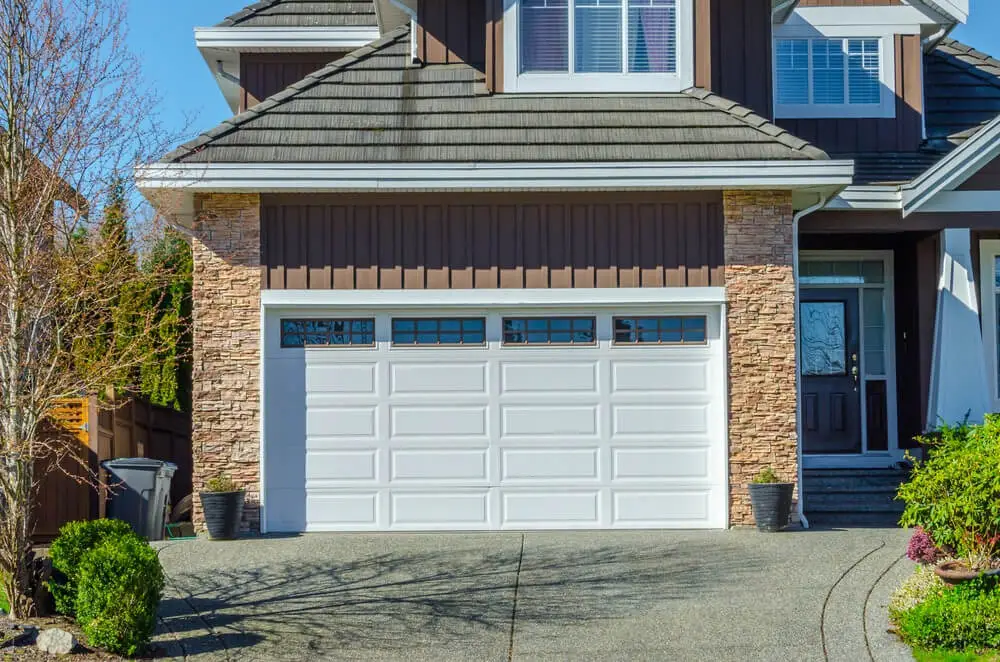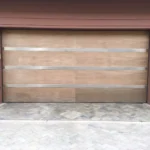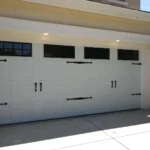Garage door sensors play a vital role in ensuring your safety when operating the garage door. They detect objects and reverse or stop the door from closing if something passes through the opening. Over time, these sensors can malfunction and require repair or replacement. In this post, we will look at how garage door sensors work and some simple DIY fixes you can try before calling a professional for Right on time Garage door San Antonio.

Content
How Do Garage Door Sensors Work?
Most modern garage doors have two basic types of sensors – optical sensors and safety sensors.
Optical Sensors
Optical or photoelectric sensors send and receive infrared beams across the garage door opening, a few inches above the floor. They are usually placed on each side of the door on the wall or door track. As the door closes, the beams intersect to form a light screen. If anything passes through this light screen, it breaks the infrared beams and the door reverses or stops its downward movement.
Safety (Pressure) Sensors
Safety or pressure sensors are attached to the bottom edge of the garage door. As the door closes and comes in contact with any object on the floor, these sensors bend and trigger the door opening mechanism. This provides an extra layer of protection, especially for smaller objects that may go undetected by the optical sensors.
Together, these sensors create a protective mechanism that prevents the door from closing if anything passes through the opening during the down cycle. The sensors are connected to the garage door opener by wires to allow communication between the two.
Common Problems with Garage Door Sensors
While garage door sensors are designed to last many years with minimal maintenance, they can develop issues over time due to regular use and environmental factors like dirt, dust and moisture. Here are some of the most common problems:
- Dust/Debris Buildup – Dust, dirt or cobwebs obstructing the sensors can weaken or block the infrared beam. This prevents the beams from aligning properly.
- Loose or Misaligned Sensors – Vibrations from door operations may cause the sensors to shift slightly out of alignment over time.
- Damaged or Worn Connections – Loose, dirty or corroded wire connections between sensors and the opener.
- Failed Internal Components – Sensors may develop faulty potentiometers, capacitors or printed circuit boards internally.
- Aged Batteries (for wireless sensors) – Low battery power can cause intermittent or unreliable functions.
- Physical Damage – Cracks, breaks or impact damage to the sensor casings or lenses.
Taking some basic troubleshooting steps can help determine if a quick fix may resolve common sensor issues.
DIY Repairs for Garage Door Sensors
Before calling a professional, try these simple repairs at home:
Clean the Sensors – Remove any dust/debris using compressed air or a soft brush/cloth. Be gentle to avoid damaging sensors.
Check Alignment – Ensure sensors are squared up facing each other and mounted in the right position. Adjust mounting brackets if needed.
Inspect Connections – Examine wire connections for corrosion, dirt or loose contacts. Clean or replace as required.
Test the Sensors – With the garage door open, slowly wave an object in the sensor paths to check if the light beam is disrupted and door stops. Also test the safety sensor.
Replace Batteries (for wireless models) – Use high-quality alkaline batteries specified by the manufacturer.
Tighten Fasteners – Ensure all mounting screws and security nuts are tightened to prevent shifting.
Lubricate Moving Parts – Apply powdered graphite or dry lubricant spray to pivots, rollers and hinges if sensors bend during operation.
If cleaning, alignment and connections checks don’t resolve issues, the sensors may need replacement. Opt for an exact ”make and model” match for compatibility. Proper installation requires basic technical skills. Consider calling a pro like ”Right on time Garage door San Antonio” or ”Garage Door Repair San Antonio” for trouble-free replacements.
When to Call a Professional
While minor problems are DIY-friendly, it’s best to contact a trained technician for:
- Complex electronics troubleshooting required
- Multiple sensor replacements
- Comprehensive system inspections
- Major physical damage to units
- Issues persist after replacement
- Need special equipment or tools
- Lack of technical skills or expertise
Professional garage door companies offer timely service, genuine replacements, and warranty support. Qualified technicians have the experience and equipment needed to quickly diagnose sensor and other system faults. Their services deliver lasting repairs for secure and reliable door operations.
Conclusion
Garage door sensors are an essential safety component for homes. Taking good care of them through regular cleaning and maintenance ensures dependable protection. Minor issues are addressable with simple DIY fixes. But for comprehensive repairs, replacement or inspections, partnering with reputed Garage Door Repair San Antonio ensures compliant work. Proactive maintenance and prompt repairs keep sensors and doors in optimal working condition for years.

Meet Rodney, our garage guru. With a wrench in one hand and a can-do attitude in the other, he’s your go-to expert for all things repair and replacement.





